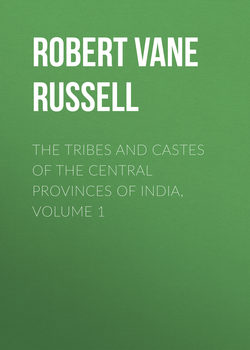Читать книгу The Tribes and Castes of the Central Provinces of India, Volume 1 - Robert Vane Russell - Страница 36
Part I.
Introductory Essay on Caste
Introductory Essay on Caste
33. Other castes who rank with the village menials
ОглавлениеMany other castes belong to the group of those from whom a Brāhman cannot take water, but who are not impure. Among these are several of the lower cultivating castes, some of them growers of special products, as the Kāchhis and Mowārs or market-gardeners, the Dāngris or melon-growers, and the Kohlis and Bhoyars who plant sugarcane. These subsidiary kinds of agriculture were looked down upon by the cultivators proper; they were probably carried out on the beds and banks of streams and other areas not included in the regular holdings of the village, and were taken up by labourers and other landless persons. The callings of these are allied to, or developed from, that of the Māli or gardener, and they rank on a level with him, or perhaps a little below, as no element of sanctity attaches to their products. Certain castes which were formerly labourers, but have now sometimes obtained possession of the land, are also in this group, such as the Rajbhars, Kīrs, Mānas, and various Madras castes of cultivators. Probably these were once not allowed to hold land, but were afterwards admitted to do so. The distinction between their position and that of the hereditary cultivators of the village community was perhaps the original basis of the different kinds of tenant-right recognised by our revenue law, though these now, of course, depend solely on length of tenure and other incidents, and make no distinction of castes. The shepherd castes who tend sheep and goats (the Gadarias, Dhangars and Kuramwārs) also fall into this group. Little sanctity attached to these animals as compared with the cow, and the business of rearing them would be left to the labouring castes and non-Aryan tribes. The names of all three castes denote their functional origin, Gadaria being from gādar, a sheep, Dhangar from dhan or small-stock, the word signifying a flock of sheep or goats and also wealth; and Kuramwār from kurri, the Telugu word for sheep. Others belonging to this group are the digging and earth-working castes, the Beldārs, Murhas, Nunias and so on, practically all derived from the indigenous tribes, who wander about seeking employment from the cultivators in the construction and repair of field embankments and excavation of wells and tanks; and various fishing and boating castes, as the Injhwārs, Naodas, Murhas and Kewats, who rank as equal to the Dhīmars, though they may not be employed in household or village service. Such castes, almost entirely derived from the non-Aryan tribes, may have come gradually into existence as the wants of society developed and new functions were specialised; they would naturally be given the social status already attaching to the village menial castes.
